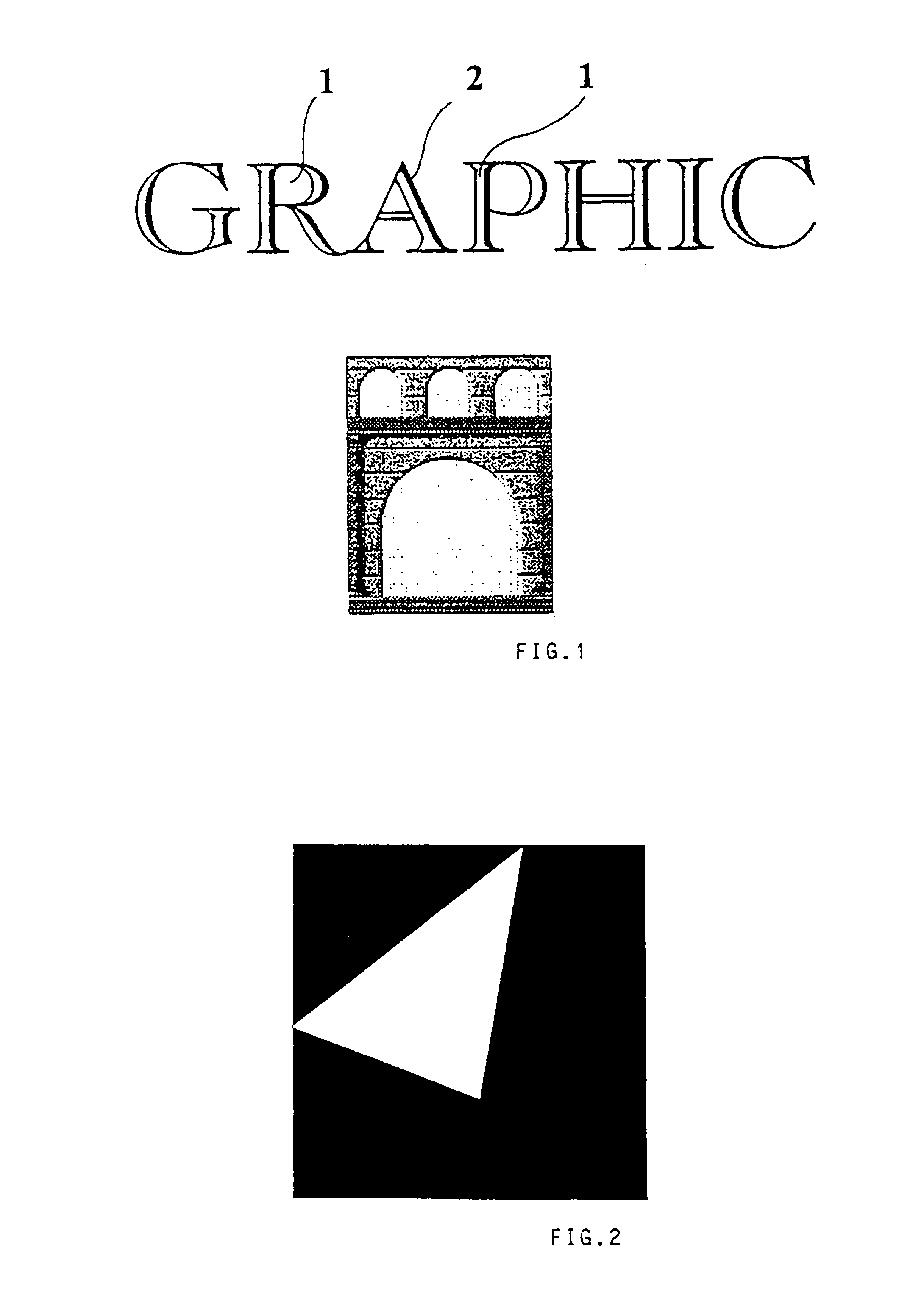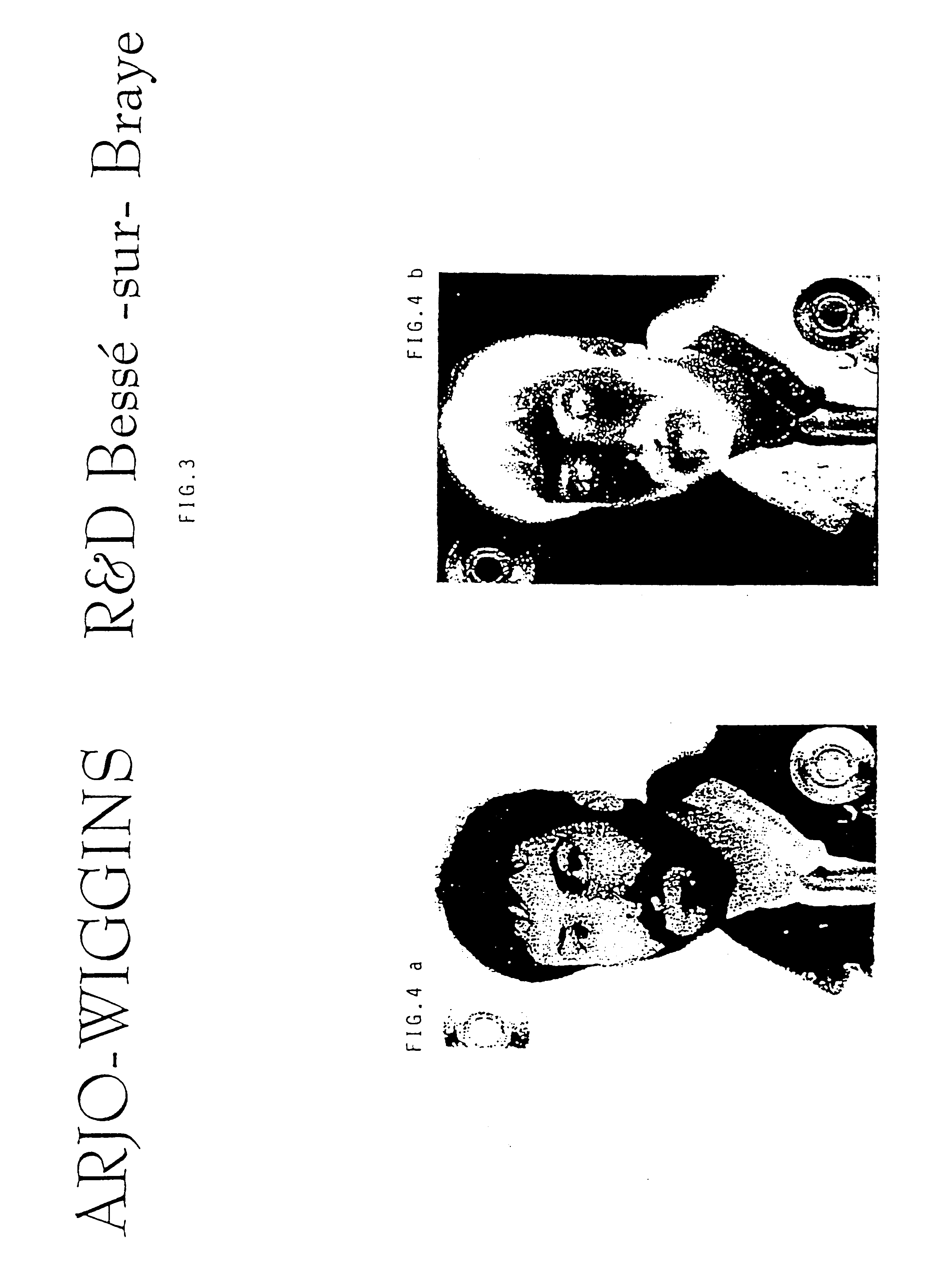Coated paper including a pseudo-watermark, and a method of manufacture
a technology of watermarking and coated paper, applied in the field of coating paper including a pseudo-watermarking and a method of manufacture, can solve the problems of unsuitable wet watermarking methods for various reasons, variable and small paper involved, and difficult infringement and reproduction by photocopying, etc., and achieve the effect of omewhat sm
- Summary
- Abstract
- Description
- Claims
- Application Information
AI Technical Summary
Benefits of technology
Problems solved by technology
Method used
Image
Examples
example 1
OPAQUENESS CONTRAST
A sample of 135 g / m.sup.2 of white paper taken raw from a non-calendered coating machine and corresponding after finishing to three-layer two-face coated paper with a total coating weight of 45 g / m.sup.2, sold under the trademark Maine.RTM., gave rise after being re-wetted with the pattern of FIG. 1 which constitutes the image of a gate and the word "GRAPHIC", using software implementing Times New Roman 72 font, followed by calendering, to a coated paper having marks resembling a translucent shaded watermark of the image of the gate and the pattern "GRAPHIC". Given the fineness of the lines constituting the letter characters, the gloss effect was difficult to observe. The variable reduction in thickness in the treated zone went up to as much as 40% compared with the remainder of the paper.
example 2
GLOSS AND COLOR CONTRAST
A sample of 250 g / m.sup.2 ivory color paper, taken raw from the non-calendering coating machine, and corresponding after finishing to three-layer, two-face coated paper with a total coating weight of 68 g / m.sup.2, sold under the trademark Ideal.RTM., gave rise, after re-wetting with the image of the Applicant's logo, followed by calendering, to coated paper presenting the Applicant's logo as shown in FIG. 2 as a "watermark" by contrast with a gloss difference of +6 points (TAPPI 75.degree.) and with a color difference .DELTA.E of 1.19 (CIELAB 1976). Given the considerable thickness and weight of the medium and the quantity of re-wetting solution applied, the solution did not penetrate in satisfactory manner into the fiber medium so that the loss of opaqueness was very small and no significant opaqueness contrast was observed. The thickness reduction in the treated zones was about 6% relative to the remainder of the paper.
example 3
OPAQUENESS CONTRAST
Under the same conditions as in Example 1, 90 g / m.sup.2 surface-treated paper was used that had been watermarked in conventional manner in the wet portion of the paper-making machine, corresponding to the watermarked laid paper sold under the trademark Conqueror.RTM.. After the paper had been re-wetted with a pattern constituting by the words "ARJO WIGGINS", and then calendered, paper was obtained having opaqueness contrast, when observed in transmitted light, with the "ARJO WIGGINS" watermark of the invention and the original clear watermarks being juxtaposed without any difference in quality. Gloss contrast was difficult to observe on this Conqueror.RTM. surface-treated paper which has a coating with little pigment.
PUM
| Property | Measurement | Unit |
|---|---|---|
| temperature | aaaaa | aaaaa |
| thickness | aaaaa | aaaaa |
| mass | aaaaa | aaaaa |
Abstract
Description
Claims
Application Information
 Login to View More
Login to View More - R&D
- Intellectual Property
- Life Sciences
- Materials
- Tech Scout
- Unparalleled Data Quality
- Higher Quality Content
- 60% Fewer Hallucinations
Browse by: Latest US Patents, China's latest patents, Technical Efficacy Thesaurus, Application Domain, Technology Topic, Popular Technical Reports.
© 2025 PatSnap. All rights reserved.Legal|Privacy policy|Modern Slavery Act Transparency Statement|Sitemap|About US| Contact US: help@patsnap.com


